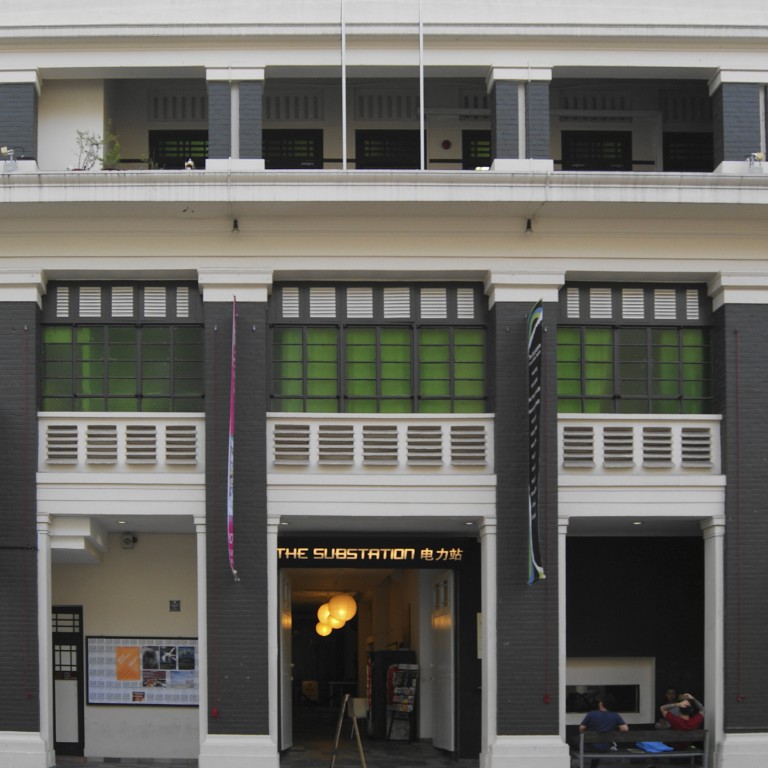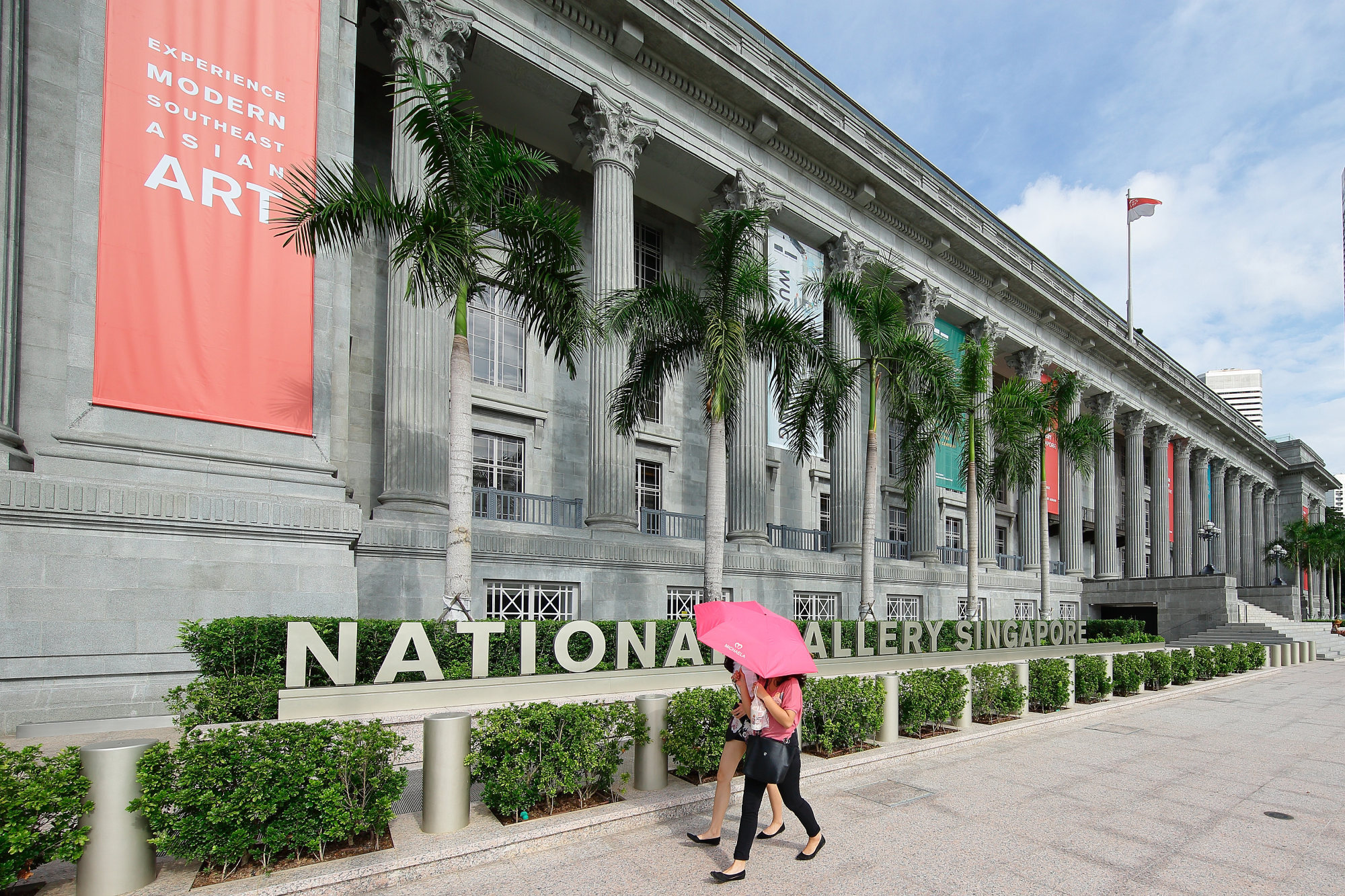
Singapore arts community mourns The Substation closure as fears rise that more independent venues will disappear
- Founded as Singapore’s first independent arts centre in 1990, The Substation will close for good in July
- Recriminations are flying as to the real reason for the decision, while its closure comes as two other independent theatres lose their government-owned spaces
Zakir Hossain Khokan, a Bangladeshi construction supervisor in Singapore, was devastated when he learned the independent contemporary arts centre called The Substation was closing in July.
Khokan, a two-time winner of the Migrant Worker Poetry Competition, was featured in a recent exhibition held in The Substation’s iconic 1920s grey-and-white building on Armenian Street. The exhibition in March focused on the island nation’s 1-million-strong low-wage foreign workforce. It was held just after the Covid-19 pandemic swept through cramped dormitories for migrant workers, including the one that Khokan, who caught the virus, was living in.
“I think that The Substation gives a lot of support to a lot of out-of-bounds topics and gives a voice to communities that don’t have a voice, like the migrant worker community,” he says. “I think that kind of support is very important, and I hope that after its closure, more doors will open.”
Among the major public figures who have spoken up about its closure is Tommy Koh, a diplomat and founding chairman of the National Arts Council (NAC), who wrote in The Straits Times that the centre was like “a beehive for artist and art lovers” where “artists young and old, of different language streams, and practitioners of different forms of art would gather at its small coffee shop or garden in the evening”.

A month since The Substation made the announcement, Singapore’s arts community is still reeling from news of its permanent closure. Named because the building used to be a power substation, The Substation was founded as Singapore’s first independent arts centre in 1990 by theatre doyen Kuo Pao Kun. The careers of some of Singapore’s most renowned artists, such as the playwright Haresh Sharma and Alvin Tan, founder of independent theatre company The Necessary Stage, were launched here.
The arts venue has always been at the forefront of efforts to push the official boundaries that limit public expression and encourage emerging artists to experiment without the fear of failure. It has held exhibitions on contentious issues such as the death penalty, unusual in a country where gatekeepers like the Infocomm Media Development Authority and covert censorship laws force artists to toe the line.
Singaporean creatives forced home rediscover the Lion City’s unique characteristics
Its closure has come as two other independent theatres have lost their government-owned spaces and raises fears the room for experimentation outside the state system is shrinking. Meanwhile, recriminations continue to fly regarding the real reason The Substation is closing.
It all started in 2017 when the NAC earmarked the historic building at 45 Armenian Street for essential renovations. The Substation, which has been leasing the government-owned property from the NAC, was then handed an ultimatum: to either return to the building as a co-tenant or vacate the building altogether this summer while the NAC helped it find a temporary home. The Substation had the option of moving back into the historic building when the works were finished.
That was the official story as recently as February, but at the beginning of March, The Substation suddenly announced that it was closing permanently in July. Many Singaporeans feel the decision to shut The Substation came abruptly and there should have been greater transparency about its plans.

Tan, whose company The Necessary Stage also has to move next year, was shocked by the news. “People are upset with The Substation’s board of directors and the NAC to close down a decades-old institution,” he says. “It’s just like the art community was left out [out of the decision-making process] – you can change whatever but to close down a cultural institution without asking the community, it just feels like they were firewalled out of the institution.”
An NAC spokesperson told the South China Morning Post that The Substation had plenty of notice for finding a new temporary home. The NAC “closely engages artists and arts groups on tenancy conditions and communicates to tenants more than a year in advance of the end of any lease,” the spokesperson says.
On March 2, the NAC issued a press release stating that it was disappointed that The Substation would close permanently, and explained the problem arose because it refused to share 45 Armenian Street with other arts groups when it reopens. The current model of operation, with The Substation the sole tenant of the building, was financially unsustainable, the statement concluded.
Loh Aik Khoon, general manager of The Substation since January, said half of The Substation’s funding comes from the NAC and the other half largely from income generated by renting out premises to commercial entities, such as a bistro and bar. That income has fallen by almost 80 per cent since the pandemic hit. The Substation believes it will lose its ability to operate as an independent arts centre and incubator if it has to share a space with other groups, and so the decision was made to shut the doors for good, he explains.
I believe The Substation would still have been able to move forward, to develop new arts initiatives, even without occupying the entirety of the building
This episode has pushed the issue of government support for the arts to the forefront, especially after a controversial 2020 newspaper survey that found that during the pandemic, artists were considered the most “non-essential” of occupations in Singapore.
By March 24, 530 members of the Singapore arts community, including Tan and well-known theatre actress Noorlinah Mohamed, signed a public statement demanding the NAC clarifies how it evaluates the value of non-profit arts organisations. “[By] relying heavily on quantitative metrics, the NAC statement fails to account for the multidimensional value of arts programming, and the long-term impact and value of arts centres such as The Substation,” the statement says.
The Singaporean government has been providing more support for the arts in general in recent years under the NAC’s five-year “Our SG Arts Plan”, launched in 2018. In addition, there have been a slate of grants to help cushion the pandemic’s blow on freelance artists and art organisations. The news of The Substation’s closure comes as two other art spaces are either at risk of, or are, losing their long-term homes. The existing venue of Tan’s The Necessary Stage will undergo renovation and TNS has to move out early next year. The Intercultural Theatre Institute (ITI) is in negotiation with its landlord, which has put the rent up to an unaffordable level.

“I believe The Substation would still have been able to move forward, to develop new arts initiatives, even without occupying the entirety of the building,” says Marcus Tan, assistant professor at the National Institute of Education’s department of visual and performing arts.
As the ruling party’s narrow margin of victory in the 2020 general election showed, the younger, more educated generations do not take well to “top-down” approaches and they desire more participation and dialogue, says Marcus Tan. “This is certainly evident in the arts here, with younger artists daring to take on challenging social-political issues,” he says.
An increasingly critical and politically active population, coupled with access to social media platforms, would increase tension between the government and the arts in Singapore, he adds.
The show goes on for Singapore Art Week despite tourist restrictions
Theatre veteran Ong Keng Sen, artistic director of Theatre group T:>Works, said in a recent online presentation that his group, based in the building named after its address at 72-13 Mohamed Sultan Road, has become a “refuge” for many artists who were forced to seek a new venue for rehearsals and performances. “We are extremely aware that 72-13 can be next in the firing line,” he said. “So digital space is also our home. We have learned not to depend overly on a physical space. We are told there is insufficient space in Singapore and we are prepared for it.”
The closures should be a wake-up call for non-profit groups in Singapore dependent on NAC funding, Marcus Tan says. “The reality is there is no such thing as a free lunch or money that comes with ‘no strings attached’. Artists would and should certainly recognise that and if they want their art to be free from interference, political or otherwise, then they need to be independent in all sense of the word, including financially.”
But there are encouraging signs for the arts, too. According to the Singapore Cultural Statistics 2020, attendance at arts and cultural events was at an all-time high in 2019, with 15.6 million attendees, up from the old record of 13.6 million attendees in 2018.

Meanwhile, The Substation organised a town hall meeting in March and has opened itself up to proposals from the arts community, hoping to find a sustainable proposal to allow the centre to continue.
Loh from The Substation said: “Several ideas were floated by various members of the arts community on the possible shape of a future Substation, such as a ground-up membership model to be constituted as a society, or continuing the current company with a refreshed board.”
Khokan hopes that this is not the end of The Substation. “I think the idea of the continuation of The Substation is good. People will find the same kind of connection, as a name is important for connection … If they keep the name, it will mean people can still feel a connection to the space,” he says.

